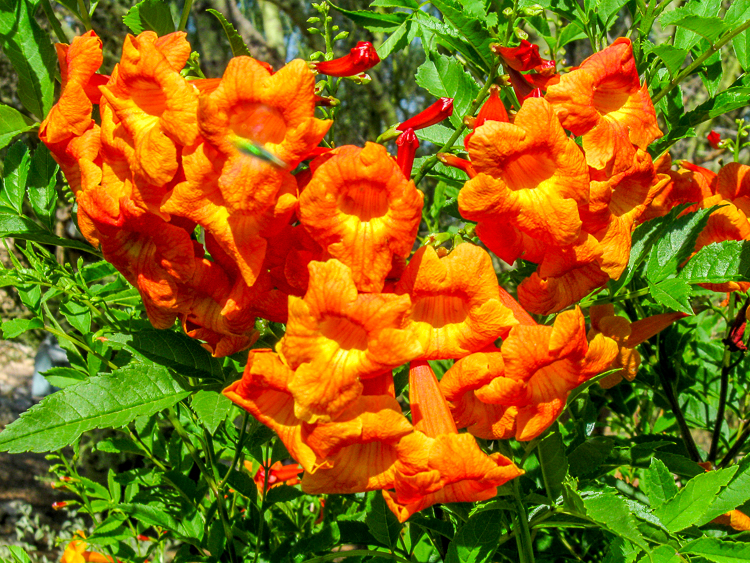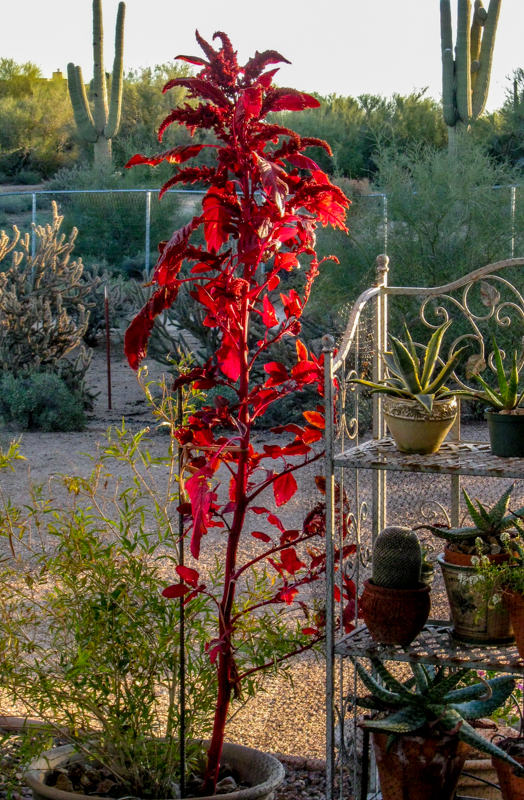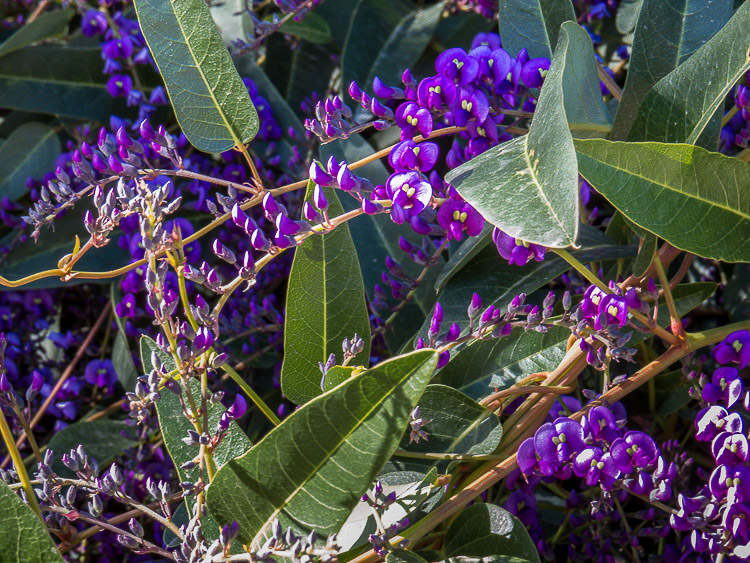
In the Sonoran Desert this is a transition time of year as we are moving from the cooler winter weather where the temperatures can be relatively low to the warmer daytime temperatures of mid-to-high seventies. This year it seems as though we have been breaking records with temps in the eighties already; yikes!
This has encouraged our Hardenbergia vine (Purple Vine Lilac) to put on quite a show. The wet winter without a frost and the warmer temperatures have our plant strutting her early spring finery!
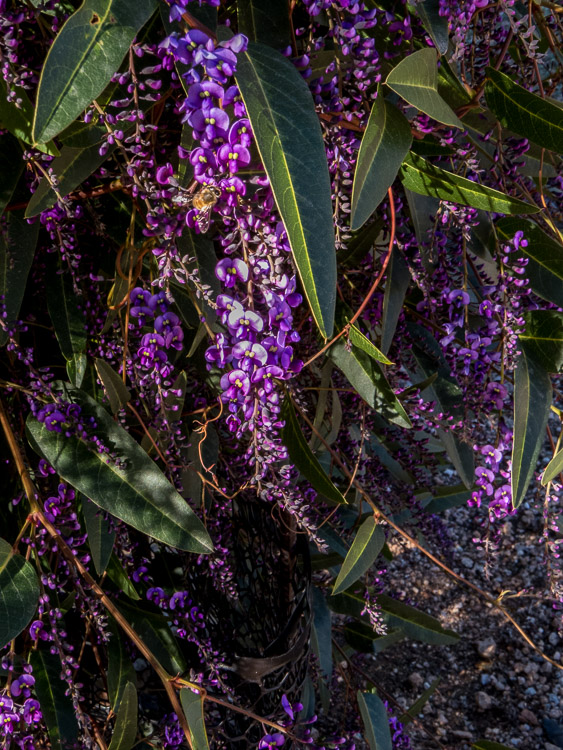
The late afternoon picture (above) shows that the bees (upper left-ish) enjoy this plant as well.
What makes this post extra sweet for me is that this particular plant was a box store rescue. They had it on a discount table for $1. Of course it looked nothing like its current self and was a leaf or two away from the compost heap!
The photo below is one of my favorite (even though the shallow depth of field has only some of the plant in focus) because the bright yellow anthers look like little eyes and with a bit of imagination, I can see a face in some of these small flowers.
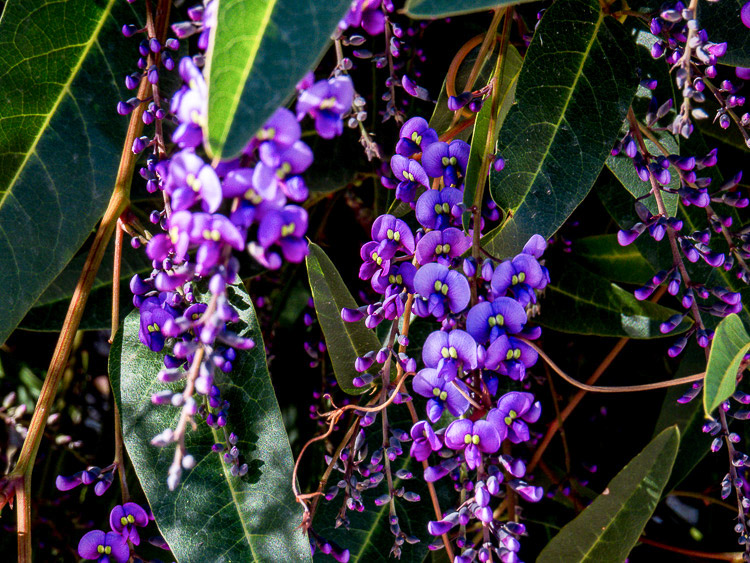
Hardenbergia originates in Australia and likes to dry out between waterings which is well suited for the desert landscape with just a bit of extra care. It is often used as a ground cover down under, but with the critters we have in the desert, we don’t need to create more hiding places!
Here is a picture of the complete vine which is more than six feet tall!
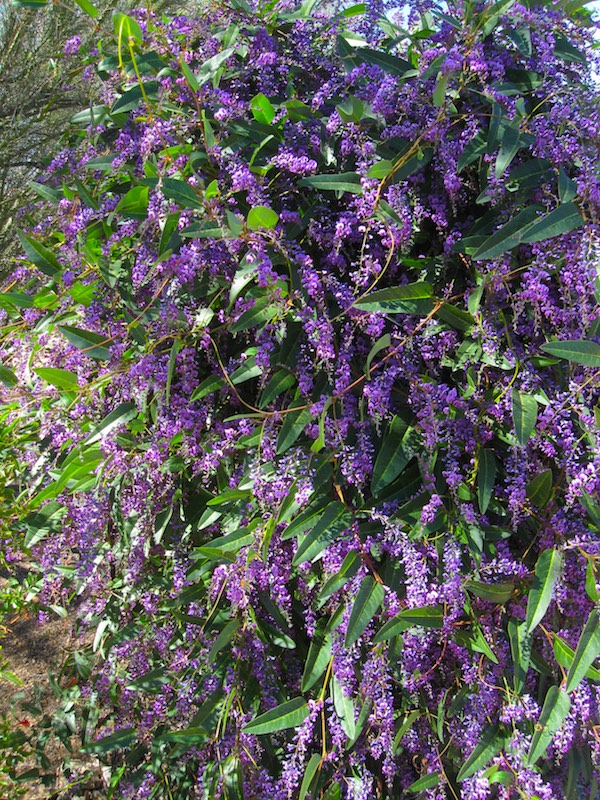
You can read more about Hardenbergia violacea here
See more JBRish gardening and desert gardening posts here HERE

